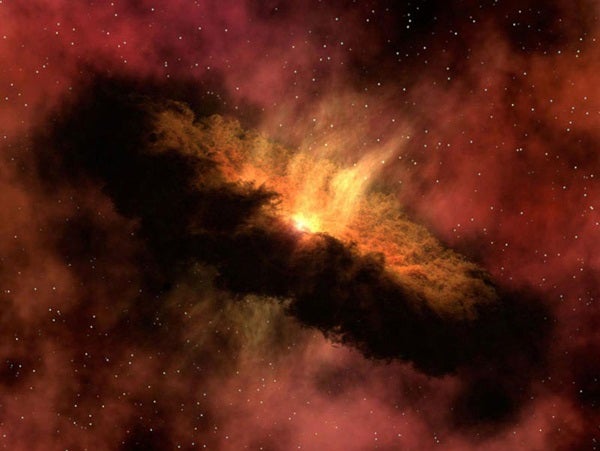Fred Ciesla from the University of Chicago simulated the dynamics of the solar nebula, the cloud of gas and dust from which the Sun and the planets formed. Although every dust particle within the nebula behaved differently, they all experienced the conditions needed for organics to form over a simulated million-year period.
“Whenever you make a new planetary system, these kinds of things should go on,” said Scott Sandford from NASA’s Ames Research Center. “This potential to make organics and then dump them on the surfaces of any planet you make is probably a universal process.”
Although organic compounds are commonly found in meteorites and cometary samples, their origins presented a mystery. However, how important a role these compounds may have played in giving rise to the origin of life remains poorly understood.
Sandford has devoted many years of laboratory research to the chemical processes that occur when high-energy ultraviolet radiation bombards simple ices like those seen in space. “We’ve found that a surprisingly rich mixture of organics is made,” Sandford said.
These include molecules of biological interest, including amino acids, nucleobases, and amphiphiles, the building blocks of proteins, RNA, and DNA, and cellular membranes, respectively. Irradiated ices should have produced these same sorts of molecules during the formation of the solar system, he said.
But a question remained. Could icy grains traveling through the outer edges of the solar nebula, in temperatures as low as –405° Fahrenheit (–243° Celsius), become exposed to UV radiation from surrounding stars?
Ciesla’s computer simulations reproduced the turbulent environment expected in the solar nebula. This “washing machine” action mixed the particles throughout the nebula, and sometimes lofted them to high altitudes within the cloud, where they could become irradiated.
“Taking what we think we know about the dynamics of the outer solar nebula, it’s really hard for these ice particles not to spend at least part of their time where they’re going to be exposed to UV radiation,” Ciesla said.
The grains also moved in and out of warmer regions in the nebula. This completes the recipe for making organic compounds: ice, irradiation, and warming.
“It was surprising how all these things just naturally fell out of the model,” Ciesla said. “It really did seem like this was a natural consequence of particle dynamics in the initial stage of planet formation.”










